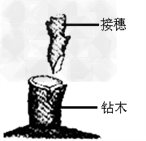问题
探究题
在实践中,为了繁育优良品种,人们通常利用植物的无性生殖来栽培农作物和园林植物。

(1)上图所示的繁殖方法叫做 ,为提高接穗成活率,使用该方法时,应当使接穗与砧木的 紧密结合。
(2)孙悟同学为了探究扦插材料的处理方法,上网查阅相关资料,发现这样一句话后,能促进其生出新根”。这句话正确吗?为此他设计了如下实验进行了探究:第一步:准备生长健壮的同种植物枝条,切成相同的茎段若干,随机均分为两组,编号A、B。第二步:将A组茎段一端用适宜浓度的某物质溶液处理,B组茎段同端用等量蒸馏水处理,然后放在相同且适宜的条件下培养。第三步:一段时间后观察并记录A、B两组生出新根的数量。
结果预测与分析:
①若A组茎段生出新根的数量明显多于B组,说明 。
②若A组茎段生出新根的数量与B组基本相同,说明 。
③若 ,说明该浓度的某物质溶液对植物茎段生根有抑制作用。
答案
(1)嫁接 形成层
(2)①该浓度的某物质溶液对植物茎段生根有促进作用
②该浓度的某物质溶液对植物茎段生根既无促进作用也无抑制作用
③A组茎段生出新根的数量明显少于B组
